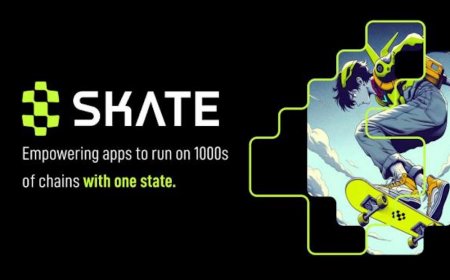Ripple Considers Native XRP Staking Implementation
21.11.2025
News / Economy / Analytics
Ayo Akinyele, head of the RippleX team, and Ripple CTO David Schwartz have released drafts outlining the concept for implementing native¬Ýstaking of XRP.
The lead developer of the XRP Ledger (XRPL) noted that the initiative emerged from reflections on enhancing the utility of the Ripple token through new capabilities.
According to Akinyele, implementing staking requires:
Another path is to maintain the existing consensus but use transaction fees to pay for¬Ýzero-knowledge proofs of correct smart contract execution by nodes. This would relieve nodes from the need to perform complex energy-intensive computations.
Ripple CEO Brad Garlinghouse also urged the community to share ideas regarding the network’s potential in decentralized finance and the integration of other applications for XRP.
The lead developer of the XRP Ledger (XRPL) noted that the initiative emerged from reflections on enhancing the utility of the Ripple token through new capabilities.
‚ÄúAll this made David and me think: what if we ever implemented support for native staking on XRPL? What would it look like?‚Äù Akinyele wrote.The specialist noted that the Ripple network was initially designed for fast and efficient on-chain value transfer, making its architecture significantly different from blockchains using the¬ÝProof-of-Stake (PoS) algorithm.
According to Akinyele, implementing staking requires:
- a source of rewards;
- a mechanism for their fair distribution.
A Distant Prospect
Currently, transaction fees in the network are burned to maintain token supply deflation. A pool to incentivize stakers could be formed from new fees associated with programming functions, Akinyele suggested.‚ÄúDistribution also requires careful design. Staking changes the interaction of validators and participants, introducing financial incentives that can enhance interaction but also subtly alter governance dynamics,‚Äù the developer added.One of the XRPL validators¬Ýcompared PoS staking to a lottery determining the next block producer. He expressed doubts that a network based on the Proof-of-Association algorithm would ‚Äúfit‚Äù into such processes. XRPL node operators work without financial incentives, do not compete for block inclusion, and the blockchain lacks a slashing mechanism‚Äîpenalties for misconduct.
“There are two ideas. Both are technically excellent, but unlikely to be implemented in practice, at least in the near future,” Schwartz replied.One option he mentioned is transitioning to a two-tier consensus model. Only an inner circle of 16 validators, chosen by the outer layer, would use staking/slashing.
Another path is to maintain the existing consensus but use transaction fees to pay for¬Ýzero-knowledge proofs of correct smart contract execution by nodes. This would relieve nodes from the need to perform complex energy-intensive computations.
Is Ripple Moving Towards DeFi?
Schwartz noted that implementing the initiative alongside smart contract integration aims to enhance the capabilities of Ripple‚Äôs distributed ledger in the DeFi sector.‚ÄúXRPL was created in 2012. Since then, the blockchain world has changed many times,‚Äù he emphasized.In October, Schwartz announced he would¬Ýstep down as the company‚Äôs CTO by the end of the year.
Ripple CEO Brad Garlinghouse also urged the community to share ideas regarding the network’s potential in decentralized finance and the integration of other applications for XRP.
Similar news:
04.04.2024
Unified Liquidity Platform Range Protocol Unveils Skate: The First Universal Application Layer Powering Apps to Run on All Chains With One State
23.08.2023




